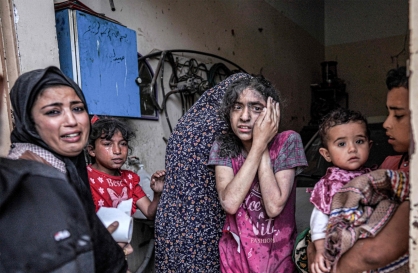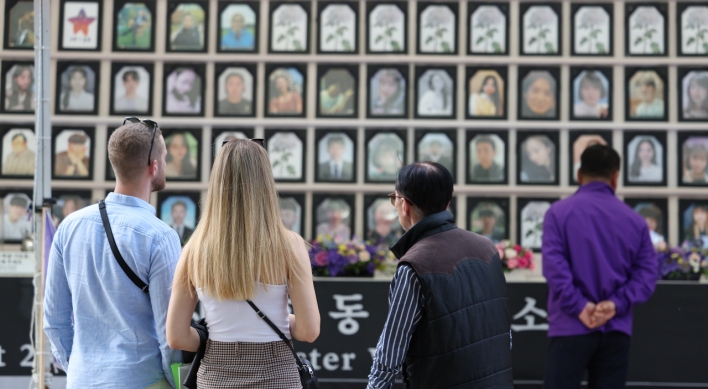You might think the International Committee of the Red Cross would have plenty to do just providing humanitarian aid to people in war zones. And so it does. So why is the organization poking its nose into the debate over violent video games?
As it turns out, that’s also a pretty good use of its time.
Among the millions of young people who play such games today ― virtually capturing, torturing and killing enemy combatants ― are some of the soldiers, military officers, government leaders and opinion makers of tomorrow. That is reason enough to argue, as the ICRC does convincingly, that their games ought to follow the international laws that protect victims of war.
Those rules, which the ICRC has a mandate to promote, are routinely flouted by the multitude of popular games that portray battlefields as lawless zones where civilians are fair targets, maximum force is standard and torture is legitimate ― as they are in any number of James Bond films or Tom Clancy novels. Yet is the ICRC calling for Agent 007 or Jack Ryan to abide by the Geneva Conventions?
It isn’t, and the reason has as much to do with form as function. While there is no definitive proof that video-game violence affects human behavior, as the ICRC acknowledges, video games are categorically different from movies or books: They require active participation. And players who are rewarded again and again for virtual war crimes may begin to regard such practices as acceptable.
Games that are realistic ― the ICRC isn’t concerned about science fiction or fantasy ― regularly feature unpunished war crimes. In “Call of Duty: Black Ops,” a player can advance only by watching his character insert glass shards into the mouth of a captured fighter and commanding the game’s hero to punch the detainee’s face. Players are allowed to attack a mosque with impunity in “Call of Duty 4: Modern Warfare” and an ambulance in “Crysis 2.” In “World in Conflict,” forces use cluster munitions, which are prohibited by a 2010 international treaty.
The ICRC isn’t looking to ban, regulate or censor such games ― which would be futile anyway, at least in the U.S., where courts have ruled their content is protected by the First Amendment. Instead, the organization encourages manufacturers to build in penalties for virtual war crimes.
What this will mean in practice is not yet clear, though it’s a pretty safe bet that players will not soon find themselves transported from the battlefield to a war-crimes tribunal. Most of the changes are more subtle. “Battlefield 3” omits certain torture scenes contained in an earlier version of the series. In “Call of Duty: Modern Warfare 3,” if a player shoots a civilian, the mission ends in failure. In “ARMA 2,” repeatedly killing civilians will get a player shot by someone on his own side.
Such revisions don’t seem to hurt sales. “Call of Duty: Modern Warfare 3” was the No. 8 seller in the U.S. last year, when so-called first-person shooter games accounted for five of the top 10 best-sellers. Making games truer to life also offers manufacturers a shot at the lucrative military market.
According to the ICRC, which works with military trainers around the world, most battlefield simulators fail to take into account the presence of civilians, even in urban settings. So ICRC-compliant games may fulfill an unmet market niche.
As for users ― and their parents ― the appeal is more realism and more responsibility. Game makers can market the changes as providing greater authenticity and challenge, requiring virtual soldiers to accomplish their mission while causing the least damage to civilians and their property. Just as actual soldiers are called upon to do.
Editorial (Bloomberg)
As it turns out, that’s also a pretty good use of its time.
Among the millions of young people who play such games today ― virtually capturing, torturing and killing enemy combatants ― are some of the soldiers, military officers, government leaders and opinion makers of tomorrow. That is reason enough to argue, as the ICRC does convincingly, that their games ought to follow the international laws that protect victims of war.
Those rules, which the ICRC has a mandate to promote, are routinely flouted by the multitude of popular games that portray battlefields as lawless zones where civilians are fair targets, maximum force is standard and torture is legitimate ― as they are in any number of James Bond films or Tom Clancy novels. Yet is the ICRC calling for Agent 007 or Jack Ryan to abide by the Geneva Conventions?
It isn’t, and the reason has as much to do with form as function. While there is no definitive proof that video-game violence affects human behavior, as the ICRC acknowledges, video games are categorically different from movies or books: They require active participation. And players who are rewarded again and again for virtual war crimes may begin to regard such practices as acceptable.
Games that are realistic ― the ICRC isn’t concerned about science fiction or fantasy ― regularly feature unpunished war crimes. In “Call of Duty: Black Ops,” a player can advance only by watching his character insert glass shards into the mouth of a captured fighter and commanding the game’s hero to punch the detainee’s face. Players are allowed to attack a mosque with impunity in “Call of Duty 4: Modern Warfare” and an ambulance in “Crysis 2.” In “World in Conflict,” forces use cluster munitions, which are prohibited by a 2010 international treaty.
The ICRC isn’t looking to ban, regulate or censor such games ― which would be futile anyway, at least in the U.S., where courts have ruled their content is protected by the First Amendment. Instead, the organization encourages manufacturers to build in penalties for virtual war crimes.
What this will mean in practice is not yet clear, though it’s a pretty safe bet that players will not soon find themselves transported from the battlefield to a war-crimes tribunal. Most of the changes are more subtle. “Battlefield 3” omits certain torture scenes contained in an earlier version of the series. In “Call of Duty: Modern Warfare 3,” if a player shoots a civilian, the mission ends in failure. In “ARMA 2,” repeatedly killing civilians will get a player shot by someone on his own side.
Such revisions don’t seem to hurt sales. “Call of Duty: Modern Warfare 3” was the No. 8 seller in the U.S. last year, when so-called first-person shooter games accounted for five of the top 10 best-sellers. Making games truer to life also offers manufacturers a shot at the lucrative military market.
According to the ICRC, which works with military trainers around the world, most battlefield simulators fail to take into account the presence of civilians, even in urban settings. So ICRC-compliant games may fulfill an unmet market niche.
As for users ― and their parents ― the appeal is more realism and more responsibility. Game makers can market the changes as providing greater authenticity and challenge, requiring virtual soldiers to accomplish their mission while causing the least damage to civilians and their property. Just as actual soldiers are called upon to do.
Editorial (Bloomberg)







![[Music in drama] Rekindle a love that slipped through your fingers](http://res.heraldm.com/phpwas/restmb_idxmake.php?idx=644&simg=/content/image/2024/05/01/20240501050484_0.jpg&u=20240501151646)



![[New faces of Assembly] Architect behind ‘audacious initiative’ believes in denuclearized North Korea](http://res.heraldm.com/phpwas/restmb_idxmake.php?idx=644&simg=/content/image/2024/05/01/20240501050627_0.jpg&u=20240502093000)






